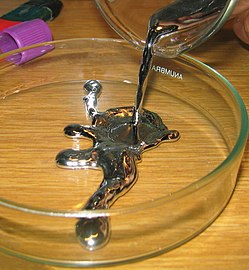Transgenic Bacteria Mop Up Mercury Spills
These mercury-resistant bacteria, developed by researchers from Inter American University of Puerto Rico, Bayamon Campus, contained either the mouse gene for metallothionein or the bacterial gene for polyphosphate kinase. Both strains of bacteria were able to grow in very high concentrations (120µM) of mercury, and when the bacteria containing metallothionein were grown in a solution containing 24 times the dose of mercury which would kill non-resistant bacteria, they were able to remove more than 80% of it from the solution in five days.

Dr Ruiz who led the research said, “The inclusion of heavy metal scavenging molecules in bacteria provides a viable technology for mercury bioremediation. This method not only would allow us to clean up mercury spills from the environment but the high accumulation of mercury within the transgenic bacteria also provides the possibility of recycling it for further industrial applications.”


0 comments:
Post a Comment